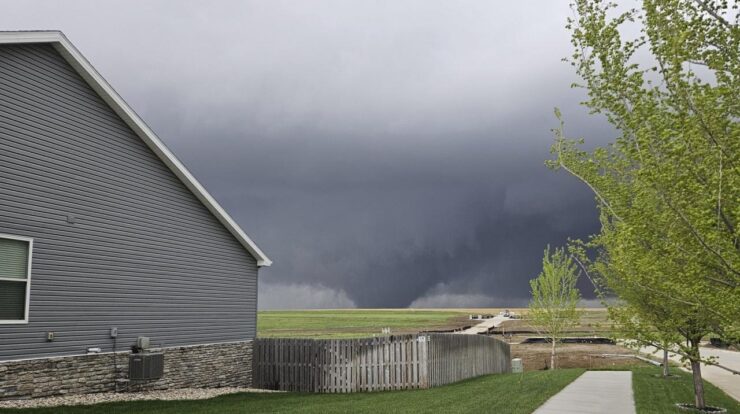
Tornado damage in Nebraska has been a recurring threat to the state, leaving behind a trail of destruction and economic losses. From shattered homes to disrupted infrastructure, tornadoes have tested the resilience of Nebraska communities.
Meteorological conditions, such as the convergence of warm, moist air from the Gulf of Mexico and cold, dry air from the north, create the ideal environment for tornado formation in Nebraska.
Overview of Tornado Damage in Nebraska

Tornadoes are a common occurrence in Nebraska, causing significant damage and economic losses. According to the National Weather Service, Nebraska experiences an average of 50 tornadoes per year, more than any other state in the United States. The state’s location in the central United States, where warm, moist air from the Gulf of Mexico meets cold, dry air from the north, creates the ideal conditions for tornado formation.
The most destructive tornadoes in Nebraska have occurred in the eastern part of the state, where the population is denser and infrastructure is more developed. In 1950, a tornado struck the town of Ruskin, killing 11 people and destroying 90% of the town’s buildings.
In 2019, a tornado struck the city of Pilger, killing two people and causing widespread damage to homes and businesses.
Types of Tornado Damage
Tornadoes can cause a wide range of damage, including:
- Structural damage:This includes damage to buildings, bridges, and other structures. Tornadoes can lift buildings off their foundations, collapse walls, and shatter windows.
- Property damage:This includes damage to vehicles, crops, and other property. Tornadoes can overturn vehicles, uproot trees, and destroy crops.
- Environmental damage:This includes damage to forests, wetlands, and other natural areas. Tornadoes can uproot trees, destroy crops, and pollute waterways.
The severity of tornado damage depends on a number of factors, including the strength of the tornado, the duration of the tornado, and the type of structures and property in the tornado’s path.
Impact on Infrastructure, Tornado damage in nebraska
Tornadoes can have a significant impact on infrastructure, including transportation, energy, and communication systems.
Transportation:Tornadoes can damage roads, bridges, and railways, making it difficult for people to travel. In some cases, tornadoes can even destroy entire towns, making it impossible for residents to return home.
Energy:Tornadoes can damage power lines and transformers, causing power outages. In some cases, tornadoes can even destroy entire power plants, leaving entire communities without power.
Communication:Tornadoes can damage cell towers and other communication infrastructure, making it difficult for people to communicate with each other. In some cases, tornadoes can even destroy entire communication networks, leaving entire communities isolated.
Epilogue
Understanding tornado damage in Nebraska is crucial for developing effective mitigation strategies and ensuring the safety of residents. Ongoing research and advancements in forecasting and warning systems offer hope for reducing the devastating impacts of tornadoes in the future.
Detailed FAQs: Tornado Damage In Nebraska
What are the most common types of tornado damage?
Structural damage, property damage, and environmental damage are the most common types of tornado damage.
How can I prepare for a tornado?
Have an evacuation plan, assemble an emergency kit, and stay informed about weather forecasts.
What is the economic impact of tornado damage?
Tornado damage can result in property loss, business disruption, and lost productivity, leading to significant economic losses.





